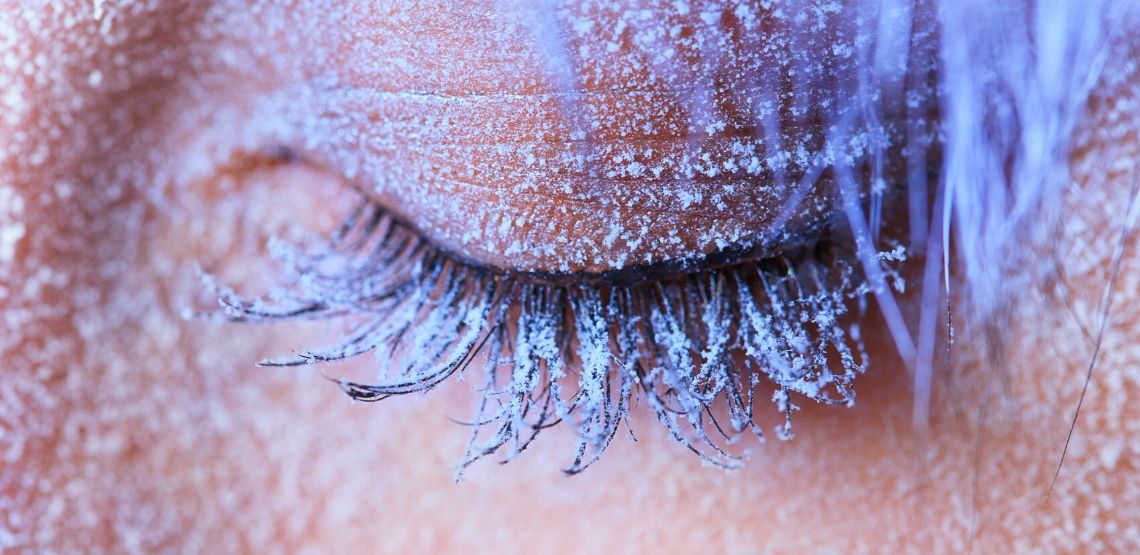How to Prevent Frostbite
Frostbite is the ninja of cold weather injuries. It can sneak up on you during broad daylight or the darkest, coldest night. Frostbite always strikes when you least expect it.
The worst thing about frostbite is you will not know you have it until you are in the middle of doing something. You could suffer from permanent numbness and painful sensitivity to cold for the rest of your life if you do not treat it fast enough.
The first part of this guide will focus on who is most likely to get frostbite. The second part will go through eight proven tips for preventing frostbite.
5 Types of People Most Likely to Get Frostbite
- Outdoor workers. When you have to work, you might ignore your fatigue, hunger, or illness so you can get it done. For most outdoor workers, that means sticking it out in unexpected cold weather to make sure you get a paycheck.
- People with psychiatric illnesses. While it is easy to prepare for and prevent frostbite in most situations, someone with a psychiatric illness might not do so. For example, someone with dementia could wander outside wearing nothing except shoes, jeans and a t-shirt in cold weather.
- People involved in car accidents and car breakdowns. Have you ever gone shopping late on a cold night to get one or two things? (You can skip this one if not.) Even if it feels cold, odds are you did not put a lot of effort into what you were wearing because you expected to be home shortly. Plus, your car has heat, so dressing warm is not a big deal, but then you have a car accident, or your car breaks down. Suddenly your main source of heat is gone and you might be injured.
- Winter sport athletes. Prolonged exposure to wind, snow or rain while having fun or competing is a recipe for getting frostbite without realizing it. All types of athletes get frostbite, from school children to professionals.
- Alcoholics. You have probably never fell asleep in the snow, but wasted people can. Someone who is wasted can fall asleep in freezing temperatures for 20 minutes to a couple hours, more than enough to get frostbite.
8 Proven Tips for Preventing Frostbite
Check the Forecast
Cold weather is not the only thing you have to think about when it comes to preventing frostbite. There is also the wind, rain and snow.
Once you know what to expect, you can prepare. If you are unprepared for the weather, you might have to change your plans or risk getting frostbite.
Do Not Smoke Tobacco
Smoking tobacco slows down your blood circulation. (It is one of the reasons why some people feel calmer while smoking.) If you do smoke and someday have frostbite, it will take you longer to warm up than a non-smoker.
Related Search Topics (Ads)
Wear Layers
For max protection, wear three layers. All layers should be loose fitting to promote air insulation and blood flow.
For your inner layer, wear a thin long-sleeved shirt made of a quick drying material like polyester. Also, make sure to wear thermal underwear.
For your middle layer, wear heavy pants to cover your lower body. To cover your upper body, wear a sweater or sweat shirt. Items for this layer could be made of wool or fleece.
For your outer layer, wear waterproof and windproof clothing, like a jacket or coat with a hood. The clothes you use for this layer need to be big enough to fit over the other two layers.
Wear Proper Footwear
If you are going to be in a snowy area, check to make sure snow cannot get in your footwear or clothing.
To cover your feet, wear two pairs of socks going over your ankles. The layer touching your skin should use a material like polyester.
Wool socks are a great outer layer. Whatever you do, avoid cotton socks because they get wet and cold faster than any other material. Wear waterproof shoes or boots in snowy areas.
Make Sure Your Ears are Covered
Yes, to prevent your ears, nose or cheeks from getting frostbite you will have to cover your head while outside. A wool hat can protect your head. Wear it with a scarf to cover your nose, face and ears. Gloves or mittens can protect your hands, but mittens are better.
Remove Wet Clothing
Any type of clothing has fibers. Fibers act as air pockets to keep heat your body generates trapped between your skin and clothes.
When your clothes get wet, these air pockets fill with water to release your body’s heat faster than dry clothes. Unless your wet clothing is a material like wool or a synthetic fiber, you want to remove them right away.
Stay Hydrated and Do Not Drink Alcohol
Water holds heat, so if your body is short on it you will get cold faster in cold environments. Avoid alcohol since it makes you dehydrated.
Know the Symptoms of Frostbite
If you know the symptoms, you can react before they get serious. The first signs of frostbite are numbness, red and tingling skin.


